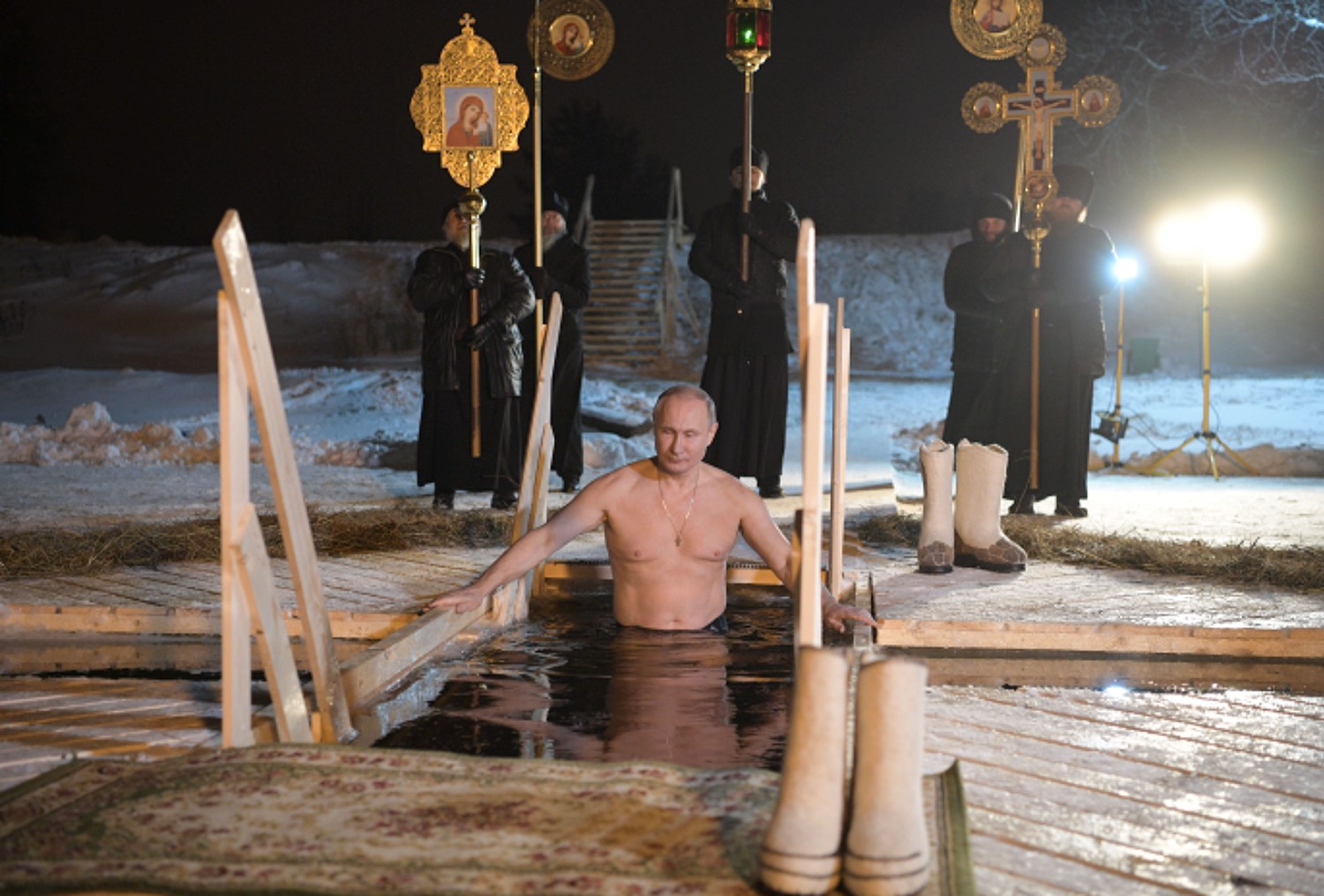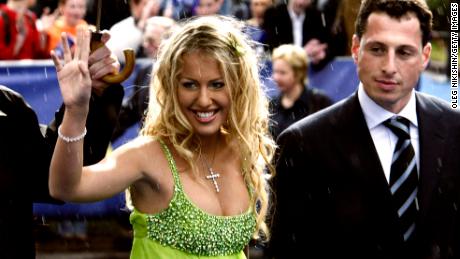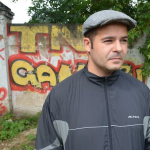Translated from the original Russian by Joseph Livesey
According to forecasts, the upcoming March 18 presidential elections in Russia will proceed without any surprises, as just the latest legitimization of another presidential term for Vladimir Putin. However, this foreseeable ‘victory,’ gained via massive pressure on the electorate and the Kremlin’s tight control over the political sphere will still point to a deep crisis within Putin’s model of “managed democracy.” During Putin’s current third term, his regime has become much more clearly based on personality, while the fact that its “democratic” elements are a mere façade has become evident beyond all reasonable doubt. Over the past few years, the rhetoric of Russia as a “besieged fortress,” and rallying around a “national leader” in the face of external enemies has meant that elections at almost every level have become plebiscites for confirming faith in the country and loyalty to the government.
The Turnout Problem

Ongoing economic crisis, a decline in most people’s incomes, and increasingly glaring social inequality, are causing a mood of protest that can no longer be expressed within existing political institutions. Passive discontent is increasingly manifest in absenteeism, or in people “voting with their feet.” As a result, the most recent parliamentary elections in Autumn 2016 were an alarm bell for the authorities—turnout was 47.8% across the country, while barely over 30% of voters turned out in major cities, such as Moscow and St. Petersburg.
Russians’ low interest in elections has been a boon to the authorities in the past, making election results more predictable, and helping Russia’s ruling party United Russia get into power. However, low turnouts in today’s political climate have become a clear threat to the legitimacy of Vladimir Putin’s upcoming victory. In December, polls indicated that 58% of voters were planning on voting in the presidential elections, 30% of whom only answering that they would “most likely” be turning out to vote.
Ahead of the March 2018 elections, the Kremlin administration has unofficially promoted a “70-70” scenario, whereby Putin would receive 70% of votes from a 70% turnout. Yet the Kremlin has repeatedly stressed that such a sharp increase in electoral activity cannot be achieved at the local level solely through so-called “administrative resource”—mobilizing budget-dependent employees and pensioners who rely on local authorities. According to the Kremlin’s plan, the elections must result in a triumphant victory for Putin, but without precipitating claims of massive electoral fraud, as was the case in 2011 when news of widespread falsifying of ballots triggered protests in the streets.
The Kremlin is hoping to accomplish its aim by engineering increased interest in the elections, by organizing concerts and local events on the day of the vote, lumping the presidential election together with separate referenda on pressing local issues, and, most of all, by creating the impression of real political competition among the candidates.
Despite the fact that Putin, in his characteristic “Caesar” fashion, rising above the mob, has refrained from taking part in any debates, the other participants in the campaign have to pretend to be involved in a battle among themselves within the framework of the scenario approved at the top. Their common goal is to draw currently apathetic or skeptical potential voters into participating in the elections, and, just as importantly, to divert attention away from the campaign for boycotting the elections, called for by the well-known opposition politician Alexei Navalny. So, who are the people in this strange election race?
Candidate Putin

Vladimir Putin officially announced his candidacy in the upcoming elections on December 6, at a speech before workers at the GAZ car manufacturing plant in Nizhny Novgorod. Reminiscent of the start of his previous term, both place and audience were selected in line with the president’s man-of-the-people, above-party-politics image.
Back in 2012, Putin’s election campaign focused on combating the West’s secret agents within the opposition, and fighting for “traditional values.” Appealing to “ordinary people,” as opposed to complacent and unpatriotic members of the middle class, Putin made a point of combining conservative and paternalistic rhetoric. One of his main promises was a sizable increase in public sector salaries. Immediately after his victory in Spring 2012 Putin issued the “May Decrees”, which required regional governments to comply with his plan to raise wages, as well as to report regularly on their progress in front of TV cameras before the head of state. Raising wages during an economic recession, with government policy as a whole sought to reduce spending, meant that the “May Decrees” actually resulted in job cuts in order to pay for the salary increases of those who kept their positions, not to mention some massaging of the statistics.
Today, the authorities no longer have the resources necessary to back up the theory that “stability” means higher incomes. On the contrary, Putin’s third term has seen inflation and a sharp decline in living standards. The incumbent president’s two most loyal electoral demographics—pensioners and state employees—have been the greatest losers from the government’s “anti-crisis” policies in recent years. Putin is no longer in a position to fire off promises to raise living standards; he can only try to assure voters that there won’t be another sharp collapse. This is why Putin insists that active foreign policy and escalation of militarist hysteria inside the country will be put on the back burner in his new term. Announcing his candidacy in early December, he solemnly declared the end of Russian military operations in Syria. The issue of East Ukraine has also been deliberately removed from his campaign’s narrative. The new consensus is that Russia should focus on fixing its domestic problems, while the frozen conflict in the Donbass region following the Minsk Agreements goes on indefinitely.
Putin’s official electoral manifesto is yet to be published, but we know it is being written under the guidance of Alexei Kudrin, a former finance minister and a key strategist of Putin’s neo-liberal policies in the 2000s. The main vision will be of modest growth in spending on education and health paid for by tax increases, raising the retirement age, and more “targeted” social policies. Once again, the government’s continued course of compensating for the consequences of the economic crisis by reducing living standards will be dressed up with false declarations about “investing in human capital.”
Given the total substantive vacuity of Putin’s electoral campaign, the main emphasis will be on the absence of any alternative. Voting for the incumbent president should seem like simply fulfilling one’s patriotic duty. Hence the scheduling of the vote for March 18, the official day of Crimea’s “reunification” with Russia.
The Communists’ New Candidate

Perhaps the Kremlin’s most successful move to attract attention to the election was the emergence of a new candidate from the Communist Party of the Russian Federation (CPRF), Pavel Grudinin. Over the past decade, the CPRF has once and for all transformed itself from a mass activist party into a bureaucratic structure focused exclusively on participating in elections. The party’s leadership has become fully integrated into the “managed democracy” system, supporting the president on all key political issues. The CPRF’s permanent leader Gennady Zyuganov has long ceased to be seen as a serious alternative to Putin. His personal ratings at the end of 2017 were less than 4%. It was clear that Zyuganov was no longer able to attract a “protest electorate,” the mobilization of which had been traditionally the responsibility of the CPRF within the existing political order. A collapse in support for the Communists in the upcoming elections could lead to an imbalance in the fake party system, which in turn could cause a serious crisis within the party itself. However, a solution has been found. At the end of December, the CPRF Congress approved the official candidacy of non-partisan businessman Pavel Grudinin.
Grudinin’s calling card is the enterprise he owns on the outskirts of Moscow, which bears the loaded name “Lenin State Farm” (“Sovhoz”). In reality, this “sovhoz” has long become a joint stock company, with controlling stakes held by a small group of managers, while Grudinin owns a 40% share. Most revenue from this particular “sovhoz” comes from renting out land to wholesale supermarkets and dealer centers, for companies such as Cash & Carry, Toyota, Nissan, among others. None of this, however, has stopped Grudinin and other CPRF functionaries from portraying this business as an “oasis of socialism,” where workers enjoy access to Soviet-era social programs. Grudinin presents himself as the candidate for a coalition of “patriotic forces,” rallying together the extreme left, imperial nationalists, and “nationally-oriented” medium-sized businesses around the CPRF. Left Front leader Sergei Udaltsov, who probably sees this as a way into “big politics,” is actively involved in Grudinin’s campaign in the same way one might expect to see retired patriotic army generals.
Grudinin’s non-party affiliation also benefits the CPRF leadership, as it means no changes within the party. This is most likely a “marriage of convenience” that will come to an end immediately after the election.
His constant presence on Russian television talk shows, typically under strict control from the top, suggests that Grudinin is in the Kremlin’s good graces. Grudinin’s manifesto contains nothing new compared to the usual set of CPRF proposals—increases in social spending, restrictions on capital outflows, developing the domestic market, and so on. However, his fresh public speaking style and lively presence in the media are already making him an almost guaranteed second place in March (as of mid-January, Grudinin’s rating was about 7%).
The Liberal Opposition

One of the Kremlin’s main challenges within the narrative framework of the March elections is to distract liberally-inclined voters from the idea of a boycott. Two candidates, Grigory Yavlinsky and Ksenia Sobchak, have been put forward as a way to engage liberals in the campaign spectacle.
Yavlinsky, the long-serving leader of the Yabloko Party, is a veteran of Russian politics from the 1990s. His message has never shifted: Russia has been taken over by an authoritarian, nationalist regime, which must be removed peacefully, and be replaced by civil liberties and “European values.” Yavlinsky openly declares that he has no chance of winning these elections, as their result is already common knowledge. However, he presents a vote for him as an ethical choice, a demonstration to the authorities that there is a part of society in disagreement with corruption, imperial aggression, and social inequality.

The second liberal candidate, Ksenia Sobchak, best known previously as a presenter on entertainment television shows aimed at young people, also claims to be a protest candidate. She has called on young voters to use the election as a way to express their dissatisfaction with a lack of systemic justice and a lack of social mobility. There have been repeated accusations that Sobchak’s candidacy is a ruse, secretly supported by the Kremlin, to disorient would-be supporters of Alexei Navalny.
A negligible result for both candidates—as currently predicted, no more than a combined 3-4% of the total vote—will also allow pro-government voices to assert that there is little demand for political liberalization in Russian society.
The Eternal Zhirinovsky

Third place in the upcoming elections is likely to be pocket right-wing populist Vladimir Zhirinovsky. Zhirinovsky has run in all presidential elections in Russia since 1991. His brand of politics is to promote absurd and incommensurable demands—like lowering the price of vodka or bombing America—that project the irrational imaginings of lumpenized lower social classes. Zhirinovsky’s ticket will help increase turnout among this demographic.
Navalny and the Boycott Campaign

Anti-corruption campaigner and anti-establishment populist Aleksei Navalny was not allowed to run in the elections due to trumped-up criminal charges, on which he was provisionally convicted several years ago. However, the real reason for the Electoral Commission’s decision lies in the unpredictability of a would-be vote for Navalny. He has proved capable of garnering significant support from voters. Over the past year, in response to calls from Navalny, several nationwide public protests have taken place, demonstrating a growing mood of protest among young people and provincial middle classes. Navalny has also managed to establish a formidable network of supporters, with operations in all major cities across the country, and nearly 200,000 registered volunteers—effectively the sole mass opposition organization in the country.
Navalny’s campaign manifesto consists of a series of populist demands, a portion of which are distinctly social in character, such as combatting “illegal enrichment,” progressive taxation, and limits on police and defense spending. Even his campaign’s chief slogan, “wealth for all, not just for the 1%,” clearly reflects its anti-elite orientation. At the same time, Navalny regurgitates liberal calls for the “demonopolization” of the economy (read, privatization of state assets), while flirting with nationalists by calling for the introduction of visa regulations for migrant workers from Central Asia.
Under current political circumstances, Navalny’s campaign policies are ultimately of marginal concern. Unlike Navalny, Yavlinsky has a clear message advocating rights for trade unions; Grudinin is focusing on the nationalization of natural resources; Sobchak—alone among the candidates in this regard—is calling for gender equality and an end to discrimination against sexual minorities. Navalny’s main significance is not in his program, it’s in his principled promotion of grassroots mass protest. He insistently repeats that only engaged street politics, as opposed to fake elections, can change the current state of affairs. In early January, Navalny openly called for a “voter strike,” an active election boycott combining non-participation in the vote with mass protest events and monitoring of potential fraud at polling stations.
The Left’s Position

The leftist movement outside the CPRF has been divided in regard to the upcoming elections. A significant number of its ranks are leaning toward an active boycott, others support Pavel Grudinin, while the small Stalinist Russian United Labor Front (ROT-Front) is still trying to register its own party “workers” candidate. The situation as I’ve described it here points to the conclusion that any participation in the March elections will ultimately contribute to a temporary stabilization of the current regime, and the legitimization of another six years of personal rule by Putin.
That said, uncritical support for Navalny could end up diluting his populist movement, a risk magnified by its clearly leader-centric and anti-democratic character. An independent movement for a “boycott by the left,” which would articulate an anti-capitalist alternative to Russia’s existing political and social order, could, through coordinated unity, draw a line between a leftist position and that of Navalny, while also laying a foundation for a subsequent consolidation of Russian radical leftists who refuse to play by Kremlin rules.
 Ilya Budraitskis(1981) is a historian, cultural and political activist. Since 2009 he is Ph.D. student at the Institute for World History, Russian Academy of Science, Moscow. In 2001-2004 he organized Russian activists in mobilizations against the G8, in European and World Social Forums. Since 2011 he has been an activist and spokesperson for Russian Socialist Movement. Member of Editorial board of “Moscow Art Magazine”. Regular contributor to the number of political and cultural websites.
Ilya Budraitskis(1981) is a historian, cultural and political activist. Since 2009 he is Ph.D. student at the Institute for World History, Russian Academy of Science, Moscow. In 2001-2004 he organized Russian activists in mobilizations against the G8, in European and World Social Forums. Since 2011 he has been an activist and spokesperson for Russian Socialist Movement. Member of Editorial board of “Moscow Art Magazine”. Regular contributor to the number of political and cultural websites.

2 replies on “Russian Presidential elections 2018: predicable results with unpredictable aftermath ”
Thank you so much, Ilya, for this very clear, concise delineation of the current electoral scene in Russia, and your outline of the advantages of “an independent movement for a ‘boycott by the left,'” articulating “an anti-capitalist alternative to Russia’s existing political and social order, [that] could, through coordinated unity, draw a line between a leftist position and that of Navalny, while also laying a foundation for a subsequent consolidation of Russian radical leftists.”
It’s a shame that Navalnyi’s movement is leader-centric and anti-democratic, because it’s so important (in Russia and the US) to try to create a movement that prepares institutionally for what happens in case of victory. Our campaigns must be democratic from the very beginning. We need to develop and practice methods of integrating differences of opinion, because they will always exist, both among activists, and between them and leaders.
like any “electoral analysis” this one will work just as fine if you shovel the names around. Casting Navalny as the paid opposition and one of the others as the genuine item will be equally credible and will equally cast the author as a “deep thinking expert”
“Never be deceived that the rich will allow you to vote away their wealth.”
Lucy Parsons